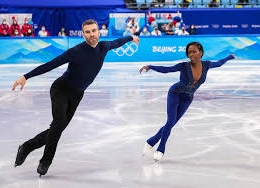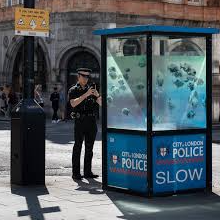
Despite notable pioneers, Black athletes remain underrepresented in the sport, with systemic barriers still in place
Despite remarkable strides by some, Black athletes continue to be a rare sight in the world of figure skating. Canadian skater Vanessa James recalls witnessing Black excellence on ice during the 1998 Winter Olympics, when French skater Surya Bonaly defied expectations with a backflip in her routine. Although controversial at the time and largely unaccepted by judges, Bonaly’s defiance left an indelible mark on those who followed in her wake, including James herself.
James, who is skating in her fourth Winter Games in Beijing, reflects on the barriers that persist for Black athletes in figure skating. “If you don’t see yourself in the sport, how can you believe you belong?” she asks, highlighting the struggle to envision success in a sport that has historically been dominated by white athletes. In fact, the Salchow, Biellmann, and Charlotte spiral—core moves in figure skating—are named after white pioneers of the 20th century, reinforcing the sport’s European roots.
This year, no Black skaters are representing the United States, although the team does feature Asian American athletes and LGBTQ+ representation. Mexico’s figure skating team has Donovan Carrillo, the lone representative from Latin America. In contrast, James is the only Black skater competing in Beijing, a symbol of Black excellence in a sport where such representation remains scarce.
Elladj Baldé, a Black Russian-Canadian professional figure skater, attributes the lack of Black skaters to historical racial segregation, especially in early 20th-century Europe and the U.S. “Black skaters weren’t allowed to be in figure skating clubs or competitions,” he explains. Despite the systemic barriers, Baldé’s unique style—blending hip-hop with classical skating techniques—has garnered attention and helped advocate for greater diversity. His work with the Stake Global Foundation aims to increase BIPOC participation in figure skating by building accessible rinks and supporting young skaters from diverse backgrounds.
The impact of Surya Bonaly’s legacy can be seen in the continued presence of Black skaters in the Canadian and French teams, but the U.S. has yet to cultivate a strong pipeline of Black talent. The struggles of pioneering Black American skaters like Mabel Fairbanks, who was excluded from U.S. Figure Skating competitions in the 1930s due to racism, and Debi Thomas, the first Black American to medal at the Winter Olympics, illustrate the challenges faced by Black athletes in the sport.
Ramsey Baker, executive director of U.S. Figure Skating, questions why Thomas’s success did not lead to a greater influx of BIPOC skaters. The answer lies in the sport’s socio-economic barriers, which have hindered the advancement of Black athletes. The murder of George Floyd in 2020 reignited the Black Lives Matter movement, pushing organisations like U.S. Figure Skating to focus more on diversity and inclusion. In response, U.S. Figure Skating hired Kadari Taylor-Watson as its first director of diversity, equity, and inclusion to address these issues, including conducting a diversity census and ensuring BIPOC skaters feel welcomed in the community.
James’s presence in the Winter Games coincides with Black History Month, and the support from fellow athletes like former French Olympian Maé-Bérénice Méité highlights the importance of representation. James reflects on their bond, saying, “When she’s on the ice, I see me.” Together, they inspire young Black skaters who can now imagine themselves on the Olympic stage. “It’s not just seeing it once,” James says. “It’s recreating it and repeating it.” As she and Méité continue to break barriers, they are paving the way for future generations, proving that representation is key to growth and success in the sport.












